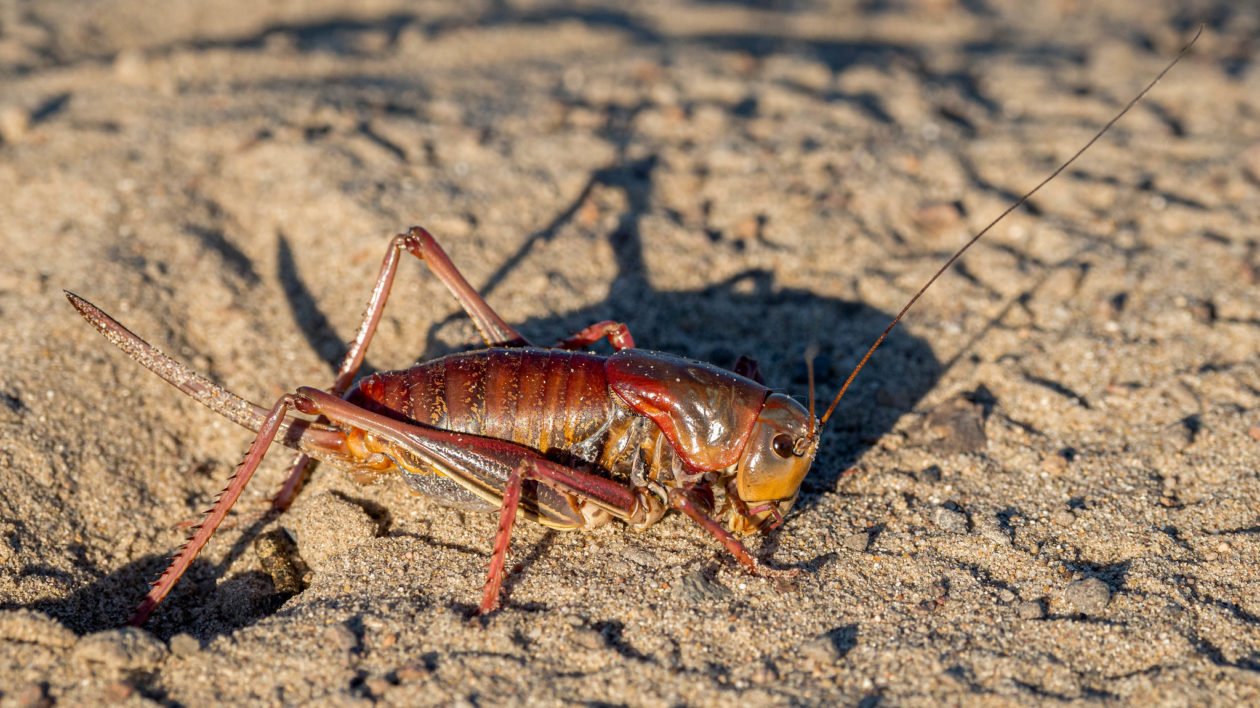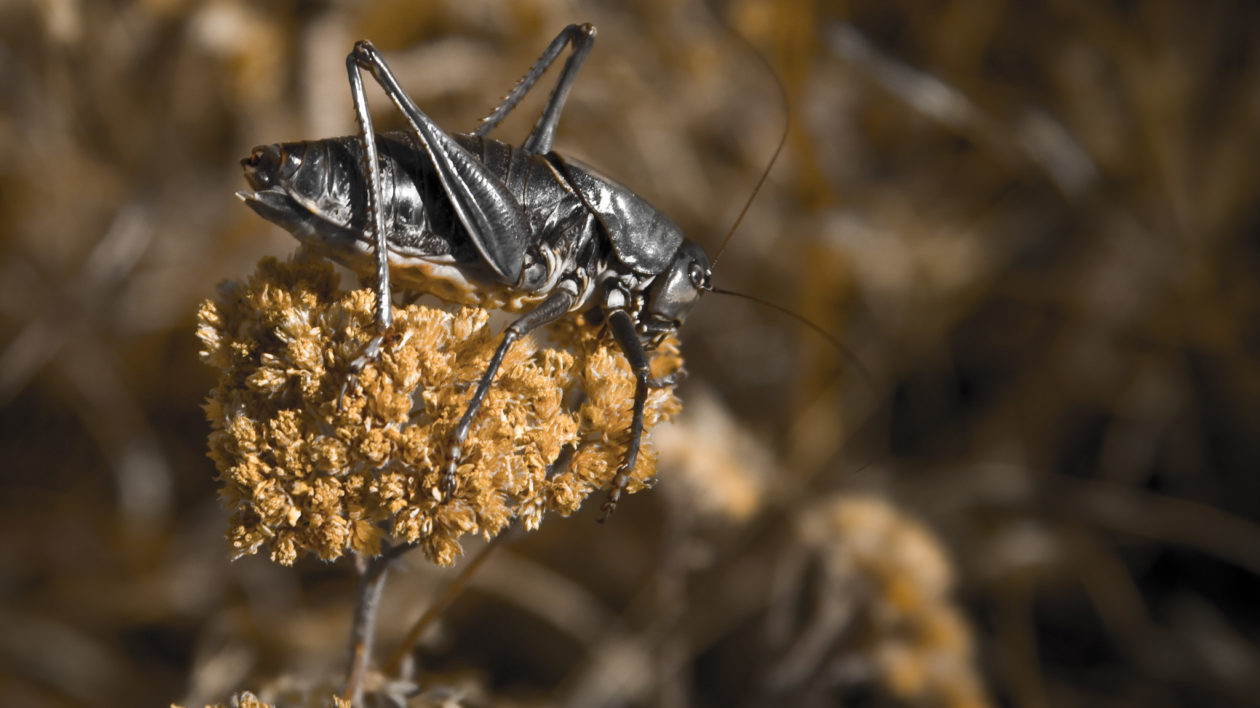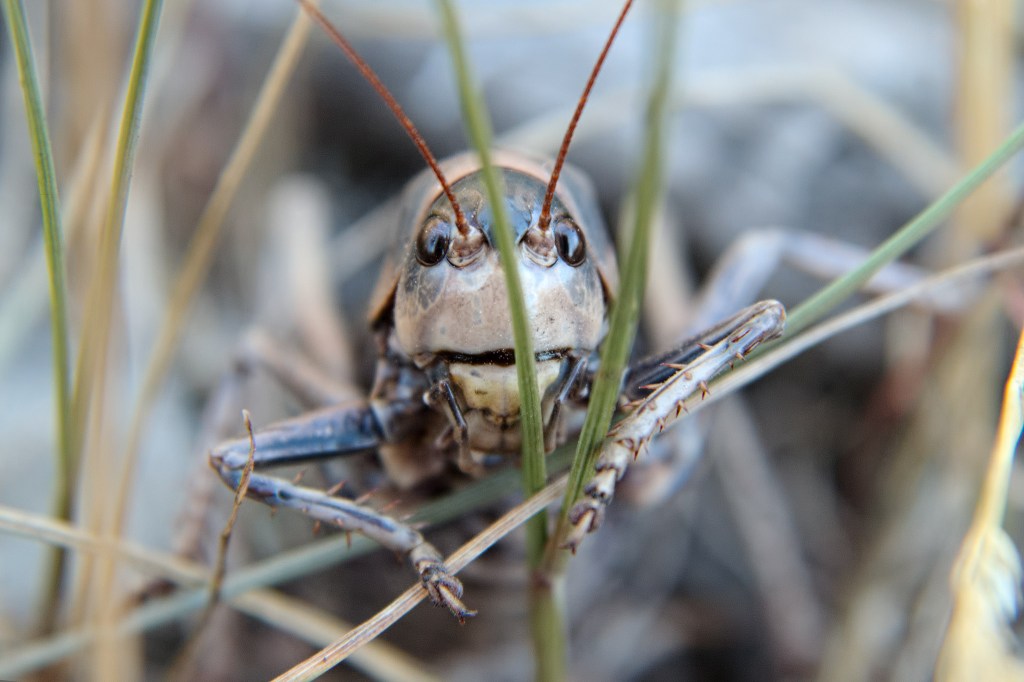As the 17-year Brood X cicada mania tapers off across the east, the hoopla for another insect swarm is ramping up out west.
Mormon cricket outbreaks are patchy but regular occurrences, and the 2021 swarms are right on schedule. Mormon cricket outbreaks are more frequent than the 17-year cycle of the cicadas, and when they boom, the populations are impossible to miss.
Mesmerizing Movements
Not true crickets, but rather a type of shield-backed katydid, the species can be found across the west from southern Manitoba to central California. They are generally found at lower densities, but as populations congregate, outbreaks occur on average 3 out of every 10 years.
These outbreaks can last for consecutive years though. Many factors are at play in Mormon cricket population ecology including weather cycles, predation and disease.
Certified Wildlife Biologist Jarren Kuipers of Land Steward Services notes that Mormon cricket outbreaks are more localized than the emergence of cicadas. “This year I’ve come across approximately 20 cricket swarms covering a pretty good geographic area in northwestern Colorado and eastern Utah.”

Mormon crickets are a hefty invertebrate, nearly 2 inches in length when full grown. Even as adults they are flightless, but that doesn’t limit their mobility.
Mormon crickets are known for traveling upwards of one mile per day. Individuals can cover 50 miles in a season simply by hoping and crawling along. Mormon crickets come together in large bands and move in unison. The herds of crickets can stretch for miles and number in the millions. At high densities, the landscape appears to be crawling with crickets.
“The entire mass in motion is kind of mesmerizing,” according to Kuipers.
Jarren shot this video of a Mormon cricket swarm south of Maybell, in northwest Colorado during the summer of 2021.
Feast or Be Eaten
The Mormon cricket has long been considered a major agricultural pest. The largest bands of the insects can have localized impacts on vegetation. More than 400 plants have been consumed by the katydids, but the preferred foods include a number of forbs (milkvetches, arrowleaf balsamroot, and penstemon) and crops (wheat, barley, alfalfa).
Numerous government reports from the early 20th century refer to them as being a principal factor in many homesteaders abandoning their properties. Near Craig, Colorado, for example, a report stated: “Damage to crops in the infested area during the period between 1923 and 1927 is hard to estimate because of an almost utter lack of reliable statistics. Undoubtedly great damage was done, because we do know that the numbers of occupied farms in the cricket-infested territory fell off from 429 in 1920 to 258 in 1927.”
They are also capable of climbing trees and feasting upon ripening fruits with documented losses to apple, cherry, and pear operations.
Mormon cricket outbreaks can result in more than crop damage. Jarren “didn’t see a swath of vegetation destroyed, but it could happen.” He also observed, “I’ve heard that Mormon cricket slicks have also been documented causing cars to slide off the roads.”
In this clip Mormon crickets cover the highway, and this 2020 news story highlights the dangers to vehicle travelers.
In addition to migrating on the landscape in search of food, cannibalism seems to keep the bands moving forward. Stephen Simpson and colleagues demonstrated protein and salt deficiencies lead to the consumption of Mormon crickets by other Mormon crickets. However, the risk of getting eaten by a neighbor seems to be less severe than that of being a lone Mormon cricket in a world of potential predators from prairie dogs and coyotes to horned larks and magpies.
“When available, these cumbersome arthropods provide many predators with a huge easy meal, similar to a cicada emergence,” says Kuipers. “In those outbreak areas, the local crows and ravens had consumed so many they appeared nearly incapable of flight.”
On more than one occasion during his graduate school days at the University of Wyoming, Jarren witnessed sage grouse gorging on them, too. “A property owner and I watched 20 grouse picking them off on the bluegrass front lawn.
Several of his radio-collared hens also made meals out of Mormon crickets.

Mormon Connection
Although they are a katydid, the cricket in the name refers to the sound the insects make. But what about the link to the Mormon faith?
During the summer of 1848 a plague of insects was ravaging the crops of early Mormon settlers in Utah’s Great Salt Lake Valley. The outbreak was eventually contained thanks to flocks of gulls.
The insects now share the Mormon name, while the birds are also memorialized in the state of Utah. A statue by Brigham Young’s grandson Mahonri MacKintosh Young was erected at Temple Square in Salt Lake City in 1913 to celebrate the birds, and the Beehive state declared the “seagull” the state bird in 1955. While the California gull is generally accepted as the bird of honor, the finer details of the Miracle of Gulls remain up for debate.
Jarren didn’t see flocks of gulls snacking on cricket treats this summer, but he did note “there are typically too few predators in any one spot to make a huge impact. And then the crickets are suddenly gone.”
At least until the next outbreak cycle.




Join the Discussion